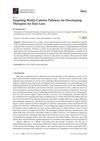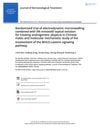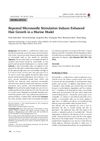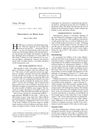The Efficacy of Light-Guiding Microneedle Patch for Stimulating Hair Growth in Androgenetic Alopecia
September 2024
in “
Archives of Dermatological Research
”
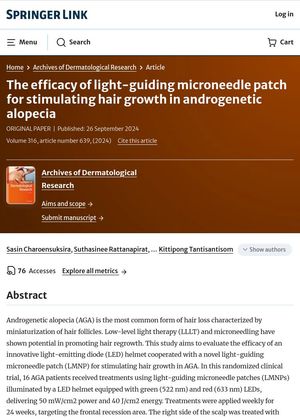
TLDR The light-guiding microneedle patch effectively stimulates hair growth in androgenetic alopecia without serious side effects.
This study investigated the use of a light-emitting diode (LED) helmet combined with a light-guiding microneedle patch (LMNP) for treating androgenetic alopecia (AGA) in 16 patients over 24 weeks. Participants received weekly treatments with green and red LED lights on different sides of the scalp, each paired with LMNPs. The results demonstrated significant improvements in hair density and diameter, with no notable difference between the effects of red and green light. Both patients and physicians reported increased satisfaction, and no serious adverse effects were observed, suggesting that this treatment is a safe and promising non-invasive option for AGA.

